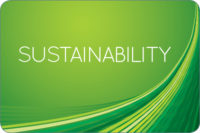 In February 2013, Tyson Foods released its fourth sustainability report. This report marks a change in our sustainability reporting process, as we transition from a biennial reporting cycle to an annual reporting cycle. This is also our first report to receive the Global Reporting Initiative’s (GRI) Application Level “A.”
In February 2013, Tyson Foods released its fourth sustainability report. This report marks a change in our sustainability reporting process, as we transition from a biennial reporting cycle to an annual reporting cycle. This is also our first report to receive the Global Reporting Initiative’s (GRI) Application Level “A.” - Releasing a report every two years limited the “freshness” of our reporting efforts. Our stakeholders need more timely and frequent communication regarding our sustainability performance.
- Tyson Foods has applied the GRI reporting framework to all of the sustainability reports it has published thus far. As we look for opportunities to strengthen our reporting efforts and increase transparency, the “A” Application Level was a natural progression.
1. Share Your Definition and Vision — As I’ve said before, a “one size fits all” approach to sustainability doesn’t exist. One of the first things I look for when reviewing a sustainability report is a statement that clearly articulates the company’s definition of and vision for sustainability. This should be presented as an element of the company’s over-arching sustainability strategy and, if possible, explained by a senior leader of the company. Understanding how a company defines and views sustainability provides context for the report. Additionally, demonstrating an alignment between the company’s business and sustainability strategies can increase stakeholder confidence that objectives and targets can be fulfilled.
2. Discuss Material Issues — More companies are implementing an issues-based approach to sustainability reporting. Issues-based reports offer transparent and frank discussions around the key issues a company and its industry is facing. Most often the reporting company will discuss the importance of the issue, how it is responding to and managing the issue, and the successes and opportunities it has had in its management approach. This approach will help ensure your report offers discussions and performance metrics of substance, which can build credibility with stakeholders.
3. Establish Clear Goals, Plans, and Data — Gone are the days of a company simply stating it will accomplish a specific target by a set date. For example, saying you are going to reduce solid waste to the landfill by 45 percent by 2017 isn’t enough for stakeholders. Stakeholders want an understanding of the:
-
Importance and relevance of the goal;
-
Plans to achieve the goal and the progress that has been made thus far; and
-
What the company will do to ensure continued success or adjust their plan to address short-comings.
Sharing quality data is, in my opinion, one of the single most-underestimated challenges in developing a sustainability report. Determining what data to include, which processes to use to collect data, how to measure what is not already measured, which operations to cover, and assigning data collection responsibilities are just a few of the internal challenges you may face.
Nonetheless, it is critical you provide transparent, logical and understandable data. You must establish the basis for any calculations and data you share in your report, and clearly state any limitations and boundaries applicable to the data presented. By doing this, you help your stakeholders better understand the progress you are making.








